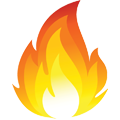-
Posts
1,872 -
Joined
-
Last visited
-
Days Won
8
Everything posted by Renomitsu
-

How Does the VHL Need to Respond to Its Growing Player Base?
Renomitsu replied to Renomitsu's topic in Archived Media Spots
I agree, and it's frustrating for players trying to make a name for themselves to be handed off to the most recent expansion team. I just also know that a sizable portion of the league's old heads don't want to mess with lines, but I'm all for it. -
How Does the VHL Need to Respond to Its Growing Player Base? An integral part of rumors for the league over the last season has been the need to accommodate increasingly large classes, as evidenced by large S66 and incoming S67 Entry Draft(s). Many suggested the S66 class was a perfect storm of excellent recruiting and affiliation with other large leagues – but that’s proven not to be the case, as S67’s class now has 91 players that have earned any TPE, including at least 41 that have hit 100 TPE. While that’s slightly below S66’s mark of 50 players of at least 100 TPE, there’s still another update or two left for this incoming class. Let’s set some definitions for ‘retained’ new players versus ‘active’/’inactive’ rostered players so we can start talking about the need to expand or change lines in earnest. First, a ‘retained’ player is a draftee that’s earned at least Welfare (+4) for each of the eight weeks since the last S66 Rankings update (as in at least +32); that means the S66 draft class has exactly 47 retained players (58.7% of draftees) based on my most recent articles’ research. Next, an ‘active’ rostered player is one that’s earned any point task or welfare in the last month or so (ending with the week of May 12). An inactive one is any player that doesn’t meet that criteria; note that any S60 or S61 player saving for regression is counted as active. Where, exactly, does that leave us in terms of the league as a whole? It’s kind of hard to decipher any meaningful data from the team-by-team tables, aside from maybe the fact that the Legion and Bears are old and the most recent expansion teams are absurdly young. But consider the lower portion of the table, where I’ve marked the total active defensemen (D), forwards (F), and goalies (G) in each phase of their career. Active S66 VHLM players >150 TPE are included to suggest which of this year’s draft class are likely to be called up come next season. More importantly, this brings to the surface exactly how much hidden impact is still left in this unusually large class – among them studs like Saskatoon defenseman Rusty Shackleford (293 current TPE), Ottawa center Jordan Tonn (266), and Minnesota’s Mat Tocco (265), who I’ve covered in previous articles. Let’s do some simple math, shall we? If we take likely call-ups (i.e. exclude inactives, low TPE S66 players) from the VHLM, we’re left with 57 forwards, 25 defensemen, and 8 goalies between S64-S66 (all current early-phase players). What are the implications of this? 1) We have enough defenders for 2 per team – plus change – with just S64-S66 players 2) Similarly, S64-S66 has enough forwards for nearly two full lines (6 forwards) 3) Lastly, we could nearly fill the league with S64-66 goalies as starters. Remember that this isn’t even taking into account incoming Season 67 Entry Draftees – but to be fair, there were only 23 active draftees from the Season 66 class that went straight into the VHL, and two of them went inactive. But we want to give the best argument against change and conservatively estimate S67’s draftees relative to S66 – let’s suppose we have 50% draftee retention for a slightly smaller class (40 players), and that they’re roughly distributed into a 9F-4D-1G arrangement, or roughly 25 forwards, 11 defenders, and 4 goalies. This means that, between S64-S67, we have 82 forwards, 36 defensemen, and 12 goalies – enough for nearly three lines of forwards, roughly 4 defenders per team, and slightly more goalies than we need. Numbers don’t lie, and even if we lost an additional 10% of players at each position we’d have enough for 2.5 lines of forwards, 1.5 lines of defenders, and a starting goalie for every franchise plus one. Point Made. What Do We Do? To answer the question above, we need to know the league’s priorities – for example, how much they want to preserve the current structure of the league. Here are just a handful of the considerations the BoG, administrators, and current + future GMs need to think over: 1) How important is ice time? 2) Similarly, how important are league-wide stars? 3) How important is team recognition? 4) How do we engage a larger player base? 5) When do we make the change? Elephant #1 – Ice Time Ice time is one of the most important issues to discuss with regards to player engagement, and begs the question: does the league expand, change the number of lines, or limit ice time by endurance? The league can’t simply afford to tuck this problem away and hope for the best without any adverse consequences, because an adjustment of some sort has to be under consideration provided the larger classes. Unless the recruitment team is immediately dissolved, we can expect classes to be significantly larger than the Season 65 Entry Draft at the very least, and that’s simply not amenable to the current league structure as-is. Let’s suppose we were to strictly expand to fit our current player-base – and, to play it safe, let’s suppose every regression-phase player retired. Right now, this season. From S62-S67, we’d have 94 forwards, 49 defensemen, and 16 goalies, and assuming we’re sticking with our current arrangement of 6F-4D-1G, we’d need about 15 teams to accommodate the forwards specifically. As we expect, we’d see a shortage of defensemen and essentially no backup goalies, which would probably be nightmarish, and frankly a 5-team expansion is ridiculous. With 12 teams total, we would see roughly 9 forwards, 5 defensemen, and 1.25 goalies per team, which is probably a little more manageable; it also requires a line expansion, which I’ll discuss in a moment. But many members are pretty tired of expansion after Moscow and Malmö, and it’s likely that some members are tired of being moved from team to team with little to no agency. The current paradigm of 2 skater lines for forwards/defensemen and 1 goalie (+backup) has worked well for the vast majority of the league’s existence, save a few teams being pretty light on defenders. But new players typically want to make forwards (or compromise and make offensive defensemen), which has slowly skewed draft classes in favor of forwards over the last few seasons. More importantly, team success in the league as-is is based on compact rosters of high-TPE players. It makes logical sense and has also been the case this season. The Helsinki Titans – runaway Victory Cup winners for S66 – have 80% of their forward playing time focused on six players, while rookies like Ludvig Sederstrom get 15% of total even-strength time. Similarly, the North American Conference-winning Calgary Wranglers rotate between the same six forwards, while the Vancouver Wolves (with a higher average TPE team vs. team, even when including 57 TPE G Patrick Vigneault) give more time to their rookies. Is it ‘wrong’ for Calgary and Helsinki to win this way? No. It’s not ethically, legally, or morally wrong in any sense. They’re playing within the rules of the league, and possibly didn’t even plan their rosters around this tight 11-player rotation. Beyond that, line coaching, astute trading, and mortgaging the future has without a doubt been an important part of their success. @Quik has done a damn good job assembling a crack team of players this season. But that doesn’t mean the league shouldn’t change. Changing the number of lines was probed in Project jRuutu, @jRuutu / @Beaviss, which revealed that the majority of the league was in favor of change at least to 3 mandatory forward lines. But it’s worth noting that a very significant minority of the league – 37% of votes – opted to keep the current set-up. We’re not going to discuss GM players here, as I feel they’re an added dimension to this argument that’s a bit touchy and frankly has only a modest influence in favor of action on behalf of the league – the GMs are well-aware of this factor, as are the BoG and administrators. And frankly, I think that a handful of the ‘keep as-is’ votes can be swayed just by the volume numbers showcased in the introduction to this article. Were we to change with respect to lines, the current suggestion of 9 forwards, 4 defensemen, and 1-2 goalies using the Louth rule actually very neatly fits the current distribution of players written out above. Elephant #2 – ‘Star Power’ and Team Recognition At least part of the reason most of us participate in sim leagues is a chance to fulfill a fantasy of being a star player in a hockey league. Maybe that’s just me projecting – but being able to follow a single player that you’re solely responsible for at least in part points toward that mentality. Part of being in a larger league means a little less overall recognition, even if GMs were to become more adamant about recognizing players on an individual basis. I’m not about to start tagging 30 players in each of my articles, and neither will many, if any Media Spot or VSN writers. Part of this argument ties in to the ‘ice time’ factor outlined above, but lower overall player statistics due to deeper teams, or less time in the limelight because of more teams is effectively inevitable. To be honest, I’m not sure that individual recognition can be completely addressed by the league with any solution. That is, recognition will HAVE to decrease because of a larger player base. That makes the highs (like MVP/MOP) higher, but only for the one or two players that achieve it per season. The change most amenable to retaining ‘star power’ (individual recognition) is probably expansion, because it allows players to stand-out better within a division or conference and permits more ‘first-line’ ice time for comparison. A decrease in ice time due to endurance or line number changes, on the other hand, doesn’t allow for gaudy numbers and buries lower-level players on major league teams for the majority of their career. I’m no formal VHL researcher, but my intuition tells me that isn’t an indicator for increased player retention. It’s a step in the more realistic direction, of course, but a deviation from one of the original intents of the league. More importantly, though, player and team recognition seem to work in opposite directions as the league grows. || When comparing larger leagues (in terms of # of teams) like the SBA to the EFL and VHL, I anecdotally feel as though it’s harder to connect with a tremendous number of teams. But since the SBA is limited to five starters, they’ve needed to start with and expand to a larger number of teams – at present, they have 24 college/minor league teams and 16 major league teams. If you asked me to name even five of the SBA teams, I’d be hard-pressed to in spite of being on an NCAA team for nearly two full seasons. It’s hard to feel engaged in a league where the brands don’t ‘stick’ – and I worry that the league may move in that direction if forced to expand too many times. I felt comfortable naming most of the VHL and VHLM teams by the time I finished my first season in the VHLM, and definitely could at least recognize their logos. Part of this is because the VHL has relatively fewer teams – but another part of it is because administration and the BoG painstakingly ensure teams are distinct and recognizable. Rapid expansion isn’t conducive to this, but I have little to no concern about the staff’s ability to maintain this level of brand identity if they continue to select good GMs. Elephant #3 – When Do We Make the Change? I'll be quik. I think the league should make a change, and relatively soon. Last season, there was a lot of hesitance with respect to expansion and line changes, but we need to understand that change was once on the horizon, and now is in plain sight. Change should happen in the next season or two unless we want competitive balancing to be around who can acquire the smallest core of high TPE players and leave tons of draft picks – and more importantly, new members – in limbo or buried in the fourth line of an absurdly deep, young team. Maybe for the next season we leave a ‘soft’ (i.e. unenforced) 3 F line requirement in while trying to figure things out. It isn’t easy to keep long-term GMs, and sussing out just the right candidate(s) will be hard. We could take a season to give current managers a break from losing players to expansion and start a search for a great pair of expansion GMs. The best option is probably to change line requirements and expand. People are resistant to change, but unless we expect a considerable slowing of new members and/or a sudden drop in player retention, we can’t dig in and hope that the league stays precisely the same. What would you do in the BoGs’ position? Do we need additional seasons to run the numbers, or is the league's current state enough for you to make a move?
-
Super physical game from Vancouver, but Davos just has too many studs built in... Distribution of goals and assists just shows you how deep they are.
-

Retrospective: The S66 Draft's Hidden Gems
Renomitsu replied to Renomitsu's topic in VHL.com Articles
Sorry to offend - I don't really follow hockey closely and didn't know the convention! I'll keep this in mind for future articles. -
VHLM Scouting Center, Somewhere, Canada - We'd talked at length about how deep last season's draft was, and the Saskatoon Wild put out a deep dive into their team's scouting algorithm, as well as some (but not all) gems. They singled out four players - now Malmö's Jerry Garcia @GustavMattias, Vancouver's Hans Gruber @TheFlash, Seattle's Clayton Park @leafssteen, and Moscow's Mat Tocco @Matmenzinger as possible steals in the draft. Since that posting, most of those players shot up in the league's rankings, and we've summarized those for you here. D - Jerry Garcia VHLM - Houston Bulls VHL - Malmö Nighthawks Previous Projection - Mid-Late 3rd Round Draft Position - 1st round, 7th overall Garcia has been featured extensively throughout our media over the last two seasons, and it's become obvious as to why. His agent has become GM of a minors expansion team, the Mississauga Hounds, and Garcia was the second defenseman and seventh overall off the list on draft day; in fact, he became Malmö's first-ever entry draft pick. Though the Nighthawks struggled after a strong start, they have a strong - and very young - core of players to work with, and Garcia is very likely to play an important role in building a championship contender squad in a couple of seasons. He's earned more than the average first-rounder (+85 vs. round average of 80.2), and vastly out-performed expectations even since our hidden gem article. This also fulfills my weekly GustavMattias tagging quota. C - Hans Gruber VHLM - Saskatoon Wild VHL - Vancouver Wolves Previous Projection - Late 3rd, early 4th Draft Position - 3rd round, 28th overall Though his draft position matches his overall projection, that's likely due to the depth in forwards in S66's draft rather than anything to do with Gruber himself. Even star center Bert Meyers (ranked 9th overall, drafted 15th) fell well beyond his projection, and Gruber was largely viewed as the sixth-best center available. The German forward has since vastly out-earned his draft position (+89 vs. 3rd-round average of 48.4) and has the 17th-most TPE out of all draftees from S66. His impact on the ice has been a little limited - 28 points on 8 goals and 20 assists, overall -11 plus-minus - but we feel that may be natural progression for being in the pros. Vancouver has also struggled to put together strong offense beyond their masterful top three (Louth, Palo, Davis), especially against deeper teams like Davos and Helsinki. G - Clayton Park VHLM - Yukon Rush VHL - Seattle Bears Previous Projection - Early 4th Round Draft Position - 3rd round, 27th overall Clayton slightly improved on his draft position, but a limited need for goalies pushed most netminders' draft stock down a bit. Like Gruber, who was drafted one spot after Park, he's proven to have excellent value for his draft position (+66 vs. 3rd-round average of 48.4). Though the vast majority of rookie goalies struggle mightily in their debuts, Park has had a respectable 90.1% saves while playing for a very thin Seattle Bears team. In spite of his best efforts, he's managed a 17-30-8 record while facing a massive 2001 shots in 57 games. We suspect his statistics will improve with time - and more teammates over 350 TPE (of which he only has 3, unless you count relegated goalie Iseult). He'll have more high-ranked skater help coming with S67's draft. RW - Mat Tocco VHLM - Philadelphia Reapers VHL - Moscow Menace Previous Projection - Early 6th Round Draft Position - 4th round, 31st overall Mat Tocco was one of the few players to make a massive leap in draft position between the gems article and the draft - and his recent earning (+76 vs. 41.3 round average) makes it pretty clear that he was a steal even with reporting on his hype. In fact, he's the only fourth-rounder to make it into the top 25 of his draft class by TPE (currently 23rd). He was selected 20th overall in the dispersal draft, allowing him to stick with the Philadelphia Reapers after a trade from Minnesota late last season; his 46 points and 101 hits in 68 games are a promising sign for the Menace, who will be more than happy to bring him up this off-season. How do you feel our scout did last season? Would you want a similar presentation for this season's draft class, or maybe S68's draftees? Leave a comment here!
-
These potential playoff matchups are scaring me :<
-
Wait a minute, this isn't Calgary v Riga.
-
Nobody: Hackett: what if I just hit everyone and everything this game? But also, idk if this is just dumb luck or what - but 34 of 34 saves from RIG G is some serious business
-
Well this one was disappointing. No one in particular to blame for this one, just a slightly worse effort from us than them.
-
I'm ok with this. Not a very impressive game statistically for either except for Edwin
-
Hi Reign friends! Another set of presser questions for you. 1) We continue to have problems against Helsinki. Is RIG G enough to elevate us over them? 2) Malmo went from top-two early season to eliminated from the playoffs with around 10 games to go. Did you expect them to make the playoffs after their hot start? 3) VHL GM jobs seem to come and go, with a switch or two every couple of seasons. Who would you like to see get the next general manager gig? 4) Are you more excited about Keanu Reeves being in Cyberpunk 2077, or the Final Fantasy 7 remake finally getting a release date? 5) Apollo Hackett recently considered further improving his checking, but decided against it. Why do you think he chose not to work on his checking more? 6) What's one way you would like to see the VHL (or VHLM) change? 7) Matt_O recently published an article about Discord vs. Forums, for locker rooms and otherwise. Where do you fall in this debate, and why? 8 ) World Cup commish job recently went up for grabs. If the commish hasn't been picked yet -- who would you like to see take the job; if it's already been picked, who would you have selected as the best second choice? 9) Let's say it's the last game of the VHL Finals, tied 2-2 in a shootout. Who would you pick to take the last shot (a) from your team, and (b) from any other team in the league? 10) Every once in a while the league covers up something crazy a player or GM did over the weekend to prevent word from getting out. What's one example of those you've heard about another player in the league (promise we won't tell)?
-
nom nom nom give me those PIMs
-
RIG G starter for the rest of s66 confirmed
-
RIG G is the hero we need, but not the one we deserve vs Helsinki
-
Championship Dome, World Juniorsland - As the buzzer sounded signaling a goal - and the end of the World Juniors - Riga Reign rookie and USA World Juniors defenseman Saul Hackett could hardly believe it. He'd scored the game-winning goal for the Americans, one minute and twenty-six seconds into a 5v4 power play following a hooking penalty by Canada's Blake Laughton. "Shooting really isn't my thing," a bewildered Hackett stated after the game. "I mean, just look at my point sheet for Riga right now. I've one goal through 61 games - that's not a coincidence." Hackett was immediately surrounded by his teammates and appeared a little confused until he took a look at the scoreboard and confetti raining down onto the rink, and he looked toward the seats containing his agent and uncle (and former VHLM/VHL defenseman) Saul Hackett. The elder of the two Hacketts appeared to be processing all the same - seeing his nation's team lose the cup but his nephew score the winning goal. "Yeah, my uncle was pretty conflicted," Apollo said with a healthy laugh, "but at the end of the day he definitely celebrated with me and this now-championship team. U-S-A! U-S-A!" As the team headed into the locker room, the Americans heckled Hackett, playfully accusing him of turning an errant pass into a goal. But provided how he's done in the VHL regular season, that's more likely than we give it credit for.
-
But... but ACL TEAR-rible was right there for you to take
-
We knew this game was going to be close, and an OT game is a pretty satisfying ending. Happy to have been on the good side of this toss-up!
-
Yeesh, where was the defense in this one? ?
-
My only stat this game was PIMs. Mission accomplished.
-
Welp. More of the same. Looks like RIG G is the key against the Titans hah
-
Strong work all around- especially the hat trick from Eric Parker!
-
Everyone on the ice brawling in the third period, nice.
-
I'm actually kinda curious as to the PIM record for a single game now 15 minutes is 25% of the entire game, and longer than the player was actually on the ice (14:41) lmfao
-
15 PIMs from Pajari... must've had a casual Zidane headbutt to have penalties that severe wtf
-
Team leaders setting a good example against a quality opponent. If this is a series in the playoffs it's gonna go the distance.
.png.ed69a7260a477fcf4feead7a0e4b7506.png)





